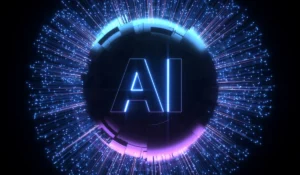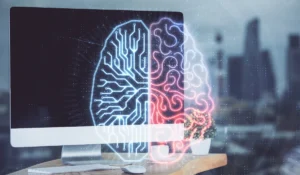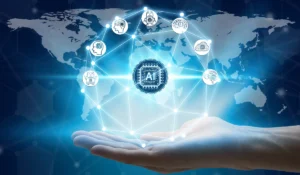Artificial Intelligence (AI) has rapidly become a key component in modern education, offering tools that can personalize learning, automate administrative tasks, and provide instant feedback. While these advancements seem promising, it is important to examine the cons of AI in education, as they reveal potential challenges that could impact students, teachers, and the learning environment.
Understanding these drawbacks helps schools make informed decisions about integrating AI effectively. Despite the benefits, AI in classrooms is not without risks. Issues such as over-reliance on technology, data privacy concerns, and the potential erosion of critical thinking skills highlight that AI cannot fully replace human guidance.
By exploring the cons of AI in education, we can better navigate its implementation, ensuring that it supports, rather than hinders, meaningful learning experiences.
Erosion of Critical Thinking Skills: Cons of AI in Education
One of the major concerns regarding AI in education is its impact on students’ critical thinking abilities. Tools like chatbots, automated essay generators, and AI tutoring systems offer quick solutions and instant feedback, which can be convenient but may inadvertently discourage deep engagement with learning materials.
When students rely heavily on AI for answers, they may skip the essential steps of reasoning, analyzing, and problem-solving, leading to a more passive learning experience. This can ultimately limit their ability to think independently and tackle complex challenges without assistance.
Additionally, overuse of AI in educational tasks can diminish cognitive engagement and creativity. Continuous dependence on AI for writing essays, completing assignments, or solving problems reduces the mental effort required, potentially hindering intellectual growth.
Data Privacy and Security Concerns

The use of AI in education requires collecting and analyzing large amounts of student data, which can create serious privacy and security challenges. Schools and educational platforms must handle sensitive information carefully, as any lapse in security can expose personal data, including academic records and behavioural patterns, to unauthorized parties.
Moreover, without proper safeguards, there is a risk that this data could be misused for purposes beyond education, such as marketing or profiling, undermining trust and safety in the learning environment.
Key Privacy and Security Issues
-
Sensitive information exposure: Personal student data may be vulnerable to breaches if not adequately protected.
-
Unauthorized access: Weak security measures can allow hackers or unapproved personnel to access confidential information.
-
Data misuse: Collected information could be exploited for non-educational purposes, like targeted advertising or profiling.
Equity and Access Disparities
A major challenge in implementing AI in education is ensuring equal access for all students. Not every learner has the resources needed to benefit from AI-powered tools, which can create significant disparities in educational outcomes. Students in underprivileged or rural areas may lack access to essential technology, such as computers, tablets, or reliable internet connections, making it difficult for them to participate fully in AI-driven learning activities.
This digital divide can exacerbate existing educational inequalities and prevent some students from reaching their full potential. In addition to access issues, infrastructure and training limitations further widen the gap. Schools in economically disadvantaged regions may not have the technological support or platforms necessary to integrate AI effectively.
Furthermore, both educators and students may lack the knowledge and skills required to use AI tools efficiently, reducing the overall effectiveness of these innovations. Addressing these disparities is crucial to ensure that AI contributes to inclusive and equitable education rather than reinforcing existing inequalities.
Dependence on Technology: Cons of AI in Education

Excessive reliance on AI in education can create a dependency that may negatively impact students’ development and learning abilities. While AI tools offer convenience and efficiency, overuse can lead to a decline in essential skills and hinder the growth of problem-solving capabilities.
Students may find it challenging to tackle tasks independently or think critically if they become too accustomed to AI assistance, potentially affecting their long-term resilience and adaptability.
Skill Atrophy
Consistent use of AI tools can lead to the gradual weakening of essential skills that students traditionally develop through practice. Handwriting, mental arithmetic, and basic problem-solving are foundational abilities that require active engagement, and over-reliance on AI may reduce opportunities to exercise these skills, potentially affecting long-term learning outcomes.
Problem-Solving Challenges
Students who frequently depend on AI for answers might struggle when faced with tasks that require independent thinking or manual effort. The ease of receiving instant solutions can diminish their ability to analyze problems critically and devise solutions on their own, which is crucial for academic growth and real-world problem-solving.
Reduced Resilience
Over-dependence on AI can limit students’ exposure to challenges that foster personal growth. Facing difficulties and learning to overcome them builds resilience, persistence, and confidence. When AI takes over problem-solving tasks, students may miss these valuable experiences, affecting their ability to handle setbacks in both academic and life contexts.
Ethical and Bias Issues: Cons of AI in Education
AI systems in education rely heavily on the data they are trained on, which can sometimes contain biases. When biased data is used, AI tools may unintentionally favour certain groups of students over others, creating unfair advantages or disadvantages.
Additionally, the decision-making processes of AI can be opaque, making it difficult for educators and students to understand how recommendations or assessments are generated. These factors raise significant ethical concerns about the automation of decisions that can impact students’ academic and future opportunities.
Key Ethical and Bias Concerns
-
Algorithmic bias: AI tools may unintentionally favour specific groups, leading to inequities in assessments and opportunities.
-
Lack of transparency: The reasoning behind AI-generated recommendations or decisions can be unclear and difficult to interpret.
-
Ethical dilemmas: Automating educational decisions raises moral questions about fairness, accountability, and the influence on students’ futures.
Teacher-Student Relationship Strain

The integration of AI in education can change the traditional dynamics between teachers and students, potentially affecting the quality of learning and interpersonal connections. Over-reliance on AI tools may reduce face-to-face interactions, which are essential for building trust, understanding, and a supportive learning environment. For more insights on how AI is transforming classrooms, check out this detailed guide on AI in schools.
Since AI cannot interpret or respond to students’ emotional cues, it may create an emotional disconnect, limiting empathy and personalized guidance. Additionally, teachers might experience role ambiguity or feel their contributions are undervalued, leading to job dissatisfaction and challenges in maintaining their professional identity.
Decreased Human Interaction
Over-reliance on AI in classrooms can reduce opportunities for face-to-face engagement between teachers and students. Such interactions are essential for building trust, fostering communication, and creating a supportive learning environment.
Without these personal connections, students may feel less motivated and teachers may struggle to assess students’ understanding effectively.
Emotional Disconnect
AI cannot perceive or respond to students’ emotions, which can lead to a gap in empathy and emotional support. Teachers often adjust their approach based on students’ moods or needs, something AI cannot replicate. This limitation may result in a less personalized learning experience and hinder students’ emotional development.
Role Ambiguity
The integration of AI may create uncertainty regarding teachers’ roles in the classroom. Some educators might feel that their responsibilities are diminished or even replaced by AI systems, causing stress, job dissatisfaction, and challenges in maintaining professional identity.
Academic Integrity Challenges
The widespread availability of AI tools has created new obstacles in maintaining academic honesty. Students can easily use AI to complete assignments, essays, or even exams dishonestly, which undermines the learning process and devalues authentic academic effort. For insights on how AI might even influence teaching methods and classroom management, see how AI teachers are starting to run the school.
This growing dependence on AI-generated content makes it harder for educators to ensure that students are genuinely engaging with their coursework and developing critical skills.
Moreover, detecting AI-assisted work presents significant challenges. Many AI-generated responses are sophisticated and difficult to distinguish from human-written content, complicating efforts to enforce academic integrity.
Financial Implications: Cons of AI in Education
Integrating AI into educational institutions involves substantial financial commitments that can strain budgets, especially for schools with limited resources. Beyond the initial costs of purchasing AI software, hardware, and setting up necessary infrastructure, there are ongoing expenses related to system maintenance, cybersecurity, and technical support.
Additionally, educators require training to use AI tools effectively, which adds another layer of investment. These financial considerations are crucial for schools to plan carefully and ensure sustainable implementation.
Key Financial Challenges
- High costs: Procuring AI software, hardware, and infrastructure can be expensive.
- Maintenance expenses: Continuous updates, cybersecurity measures, and technical support require ongoing funding.
- Training investments: Educators need proper training to use AI tools effectively, adding additional costs.
Risk of Job Displacement: Cons of AI in Education
The increasing use of AI in education has raised concerns about potential job displacement among educational staff. Automation of routine administrative tasks, such as grading, attendance tracking, and scheduling, can reduce the need for human involvement in these areas.
While this may improve efficiency, it also creates uncertainty for employees who traditionally performed these roles, potentially affecting job security and career stability. Beyond administrative positions, support staff such as teaching assistants or tutors may also face challenges as AI tools take over responsibilities like personalized tutoring or monitoring student progress.
Additionally, AI’s ability to analyze data and generate educational content could reduce demand for human curriculum developers. This shift emphasizes the need for careful planning and re-skilling opportunities to ensure that educators can adapt and continue contributing meaningfully in AI-enhanced learning environments.
Environmental Impact: Cons of AI in Education
The adoption of AI in education and other sectors carries notable environmental consequences. Training and operating AI models demand substantial computational power, resulting in high energy consumption and a significant carbon footprint.
Additionally, the rapid pace of technological advancement can lead to increased electronic waste as older devices become obsolete. The production of AI hardware also requires the extraction of natural resources, further contributing to environmental degradation and ecological strain.
Key Environmental Concerns
-
Energy consumption: AI systems require massive computational resources, increasing electricity usage.
-
Electronic waste: Frequent hardware upgrades contribute to growing amounts of e-waste.
-
Resource depletion: Manufacturing AI devices consumes natural resources, impacting the environment.
Conclusion: Cons of AI in Education
AI has the potential to transform education by providing personalized learning experiences and increasing efficiency. However, the cons of AI in education cannot be overlooked. Issues like reduced critical thinking, over-reliance on technology, and ethical concerns highlight the need for careful integration.
Schools and educators must balance AI use with traditional teaching methods to ensure students develop essential skills and maintain a human-centred learning environment. Moreover, addressing data privacy, equity, and financial challenges is crucial for the responsible adoption of AI in education.
By implementing proper safeguards, providing adequate training, and maintaining teacher-student interaction, educational institutions can harness AI’s benefits while minimizing its drawbacks. Thoughtful and measured use of AI will ensure it serves as a tool to enhance, rather than replace, the core values of learning.











